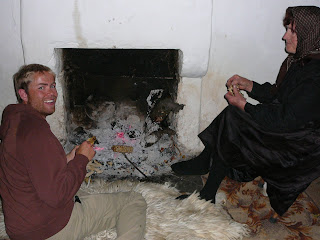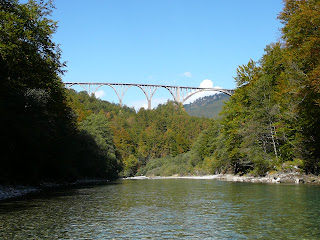


This little escapade definitely deserves a blog of its own. The journey begins with a 7:00am start time. We hop in the mini-bus and roar off up the road. We make it about 500m where the driver and his friend pull over and hop out. “Kafe?” they ask. Thinking they are grabbing one for the road we decline and remain in the vehicle. Thirty minutes or so later we realize that we are waiting for something. What, we don’t know. All Jeff is thinking is that he is missing some valuable sleep in time. More time passes. Many individuals come by to drop off various things, parcels, foods, building supplies and a number of other things that all get thrown into the van. The waiting continues. The scene in the streets is pure hilarity. Cars, trucks and buses drive this way and that, on this side of the road or that, on the sidewalk, in the gutter, you name it. A few horse and cart roll by. Some local fellows herd their sheep past. A man with a cow on a leash strolls by. Then another. There are scooters and bicycles everywhere, weaving in and out of the chaos. How no one dies we will never know. All this happens amidst the morning traffic. Still we wait. Suddenly, a squawk much akin to a screaming toddler breaks through the morning cacophony. “What the heck was that?” Says Anelia to Jeff. Worldy Jeff has deduced that there must be some kind of animal auction or butcher near by (all the animals passing through) and smoothly replies “Just a goat.” Moments later a bicycle passes by with a dead baby goat tied hooves to handlebars (back hooves on one side of the bars, front hooves on the other) and hanging. Suddenly the goat lifts its head and lets out a tremendous bleat. That goat is not dead! At this moment Jeff thinks that perhaps he understated when he said “Just a goat”. “That’s so mean,” says Anelia. “That’s Hilarious!” counters Jeff. Anelia follows up with “should I chase after and get a picture?” But by now the man and his goat toting bicycle have disappeared into the mayhem. Moments later our last passengers and goods arrive and we roll out. The time is 8:30. Perhaps we could have been told to meet the bus at 8:30. Ah well, you win some you loose some. But now, the journey has just begun.
The road to Theth could be more accurately described as the “goat track to Theth” or “trail against all odds” or something infinitely wittier than I am capable of. Anything you choose to call it, the word “road” would probably not be used. The movie clip only captures s tiny snapshot of the actual state of disrepair the “road” is in. On many occasions our mini-bus (yes that orange thing in the pictures is the vehicle we were in) had to cross large sections where the “road” was pretty near washed away. A little hair raising. The road to Theth travels up a mountain and then cleaves through a couple of cliff walls to pass into the valley on the other side. The trip down the other side is a small track with a near straight down drop to the valley below and steep cliffs leading up on the other. It was a few minutes down this spine tingling “road” that we met a truck traveling the other direction. Unfazed, our driver changed gears and began negotiating this narrow stretch in reverse for what seemed like a lifetime before finally reaching a point where the two vehicles could pass. Even the local girl in the bag seat sat up, wide eyed, and although I could not understand what she was saying I think she was praying, either that or swearing. The good news is we lived to tell the tale and the scenery was breathtaking. Check out the video to see a little of the “road”.
Please note, the video was actually taken on the way back from Theth. On the road to Theth the snow and fog made it to difficult to see anything out the side windows and therefore we could not take video or pictures. Oh yes, and in the first clip the man shouting in the background had been shouting back and forth with the bus driver for 30 minutes. What they were talking about we will never know. For those who experience motion sickness easily, this is your warning.




























































